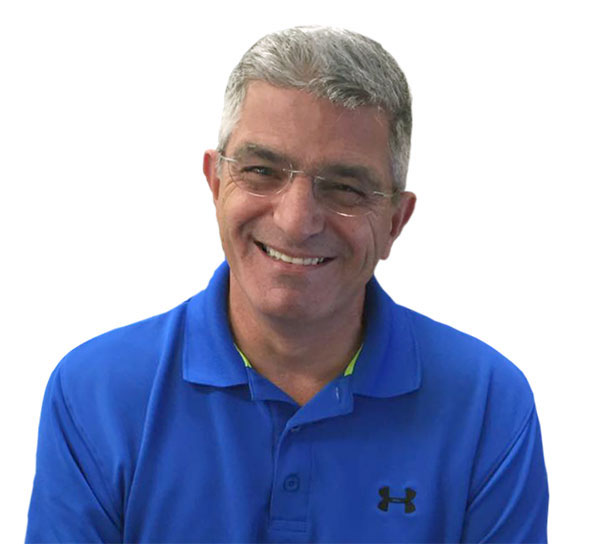
Exploring the Variants of Sleep Apnea With Dr. Katz
Did you know there are different types of sleep apnea? This prevalent sleep disorder involves disruptions in breathing during sleep, and it’s more complex than you might think. Sleep dentist in Greensboro, NC, Dr. Mark Katz, is here to unravel the nuances of each type. Recognizing and treating these variations is vital for enhancing your quality of life and mitigating potential health risks.
With personalized treatment care, your sleep will have a significant difference. If you’re suffering from sleep apnea and need treatment, call our Greensboro office at (336) 364-8988 to schedule your appointment.
Causes of Sleep Apnea
Sleep apnea can arise from various factors, both anatomical and physiological. Understanding these underlying causes is crucial for effective diagnosis and treatment. Here are the primary contributors to this sleep disorder:
- Obesity and Excess Weight: Accumulation of fatty tissue around the upper airway can lead to obstruction during sleep.
- Anatomical Factors: Structural abnormalities, such as a narrow airway, enlarged tonsils or adenoids, and a small jaw, can contribute to airway blockage.
- Age and Gender: Older individuals and males are more prone to developing sleep apnea.
- Family History: There may be a genetic predisposition to sleep apnea.
- Alcohol and Sedative Use: These substances relax the throat muscles, increasing the likelihood of airway obstruction.
- Nasal Congestion and Respiratory Conditions: Conditions like chronic nasal congestion or respiratory disorders can hinder smooth breathing.
- Neurological Disorders: Conditions like stroke, Parkinson’s disease, and brainstem abnormalities can disrupt respiratory control.
- Hormonal Factors: Disorders affecting hormones, such as hypothyroidism or acromegaly, can contribute.
- Smoking: Smoking leads to inflammation and fluid retention in the upper airway, exacerbating sleep apnea.
- High Blood Pressure (Hypertension): There is a strong correlation between hypertension and sleep apnea.

The Common Types of Sleep Apnea

Obstructive Sleep Apnea (OSA)
Obstructive sleep apnea (OSA) is the most common form of sleep apnea. It occurs when the muscles at the back of the throat fail to keep the airway open, despite the effort to breathe. This leads to a partial or complete blockage of the airway.
Common causes include excess weight, obesity, and anatomical factors like a narrow airway. Symptoms may include loud snoring, daytime sleepiness, and morning headaches. Dr. Ura recommends undergoing a sleep study, known as polysomnography, which is conducted to monitor various parameters during sleep, including breathing patterns, oxygen levels, and brain activity.
Treatment for OSA can consist of one or a combination of the following:
- Continuous Positive Airway Pressure (CPAP): This involves wearing a mask over the nose and/or mouth while sleeping. The CPAP machine delivers a continuous flow of air pressure, keeping the airway open.
- Oral Appliances: These devices, fitted by a dentist or orthodontist, can help keep the airway open by repositioning the jaw and tongue.
- Lifestyle Changes: Losing weight, avoiding alcohol and sedatives, and sleeping on your side can sometimes alleviate symptoms.
- Surgery: In severe cases, surgical interventions may be considered to address anatomical issues.

Central Sleep Apnea (CSA)
Central sleep apnea (CSA) is less common and differs from OSA; it stems from a failure of the brain to signal the muscles to breathe. It’s often associated with underlying medical conditions such as heart failure or stroke. Symptoms may include shortness of breath, difficulty sleeping, and fatigue. Like OSA, a sleep study is used to diagnose CSA. However, in CSA, there’s a distinct absence of respiratory effort during apneas.
There are two treatment options for CSA:
- Adaptive Servo-Ventilation (ASV): This advanced therapy device adjusts pressure support to match the patient’s breathing pattern, ensuring a smooth breathing rhythm.
- Medications: Depending on the underlying cause, certain medications may be prescribed to stimulate breathing.

Complex or Mixed Sleep Apnea
Complex or mixed sleep apnea is a type of sleep apnea that presents a combination of features from both OSA and CSA. Diagnosis and treatment for complex sleep apnea require a tailored approach, often involving a combination of therapies used for OSA and CSA, based on the specific characteristics of the individual’s condition.

Pediatric Sleep Apnea
Pediatric sleep apnea, also known as childhood sleep apnea, refers to the occurrence of sleep-disordered breathing in children. It can be categorized into two main types: OSA and CSA. OSA is more common in children and is often related to enlarged tonsils and adenoids. Enlarged tonsils and adenoids are the primary factors contributing to pediatric OSA. Other factors may include obesity, craniofacial abnormalities, and neuromuscular disorders.
The common sleep apnea symptoms in children are similar to OSA. Diagnosing pediatric sleep apnea involves a thorough clinical evaluation, including a detailed medical history, physical examination, and often a sleep study to monitor breathing patterns and disturbances during sleep.
Treatment options for pediatric sleep apnea may include:
- Adenotonsillectomy: This surgical procedure involves the removal of the tonsils and adenoids and is often the first-line treatment for pediatric OSA.
- Continuous Positive Airway Pressure (CPAP): CPAP therapy may be used in cases where surgery isn’t sufficient or as a temporary measure.
- Oral Appliance: If your child isn’t using CPAP, Dr. Ura may recommend a custom oral appliance instead.
Other Sleep-Related Breathing Disorders

Upper Airway Resistance Syndrome (UARS)
Upper airway resistance syndrome (UARS) is a sleep-related breathing disorder characterized by increased resistance in the upper airway during sleep. Unlike OSA, where there are clear apneas (complete cessations of airflow), in UARS, the airway narrows, causing an increased effort to breathe.
Diagnosing UARS involves a sleep study. The study helps identify increased resistance in the upper airway. Treatment for UARS involves a combination of strategies aimed at reducing airway resistance and improving sleep quality. These may include:
- Lifestyle Changes: Weight management, avoiding alcohol and sedatives, and adopting good sleep hygiene practices.
- Positional Therapy: Encouraging individuals to sleep in a specific position, such as on their side, to optimize airflow.
- Oral Appliances: Similar to those used for mild to moderate OSA, these devices can help maintain an open airway.

Nocturnal Hypoventilation Syndromes
Nocturnal hypoventilation syndromes refer to a group of disorders characterized by inadequate ventilation during sleep, leading to low levels of oxygen (hypoxemia) and high levels of carbon dioxide (hypercapnia) in the blood. These syndromes can have serious consequences for the cardiovascular and respiratory systems. Causes can be diverse, including obesity, chronic obstructive pulmonary disease, and neuromuscular diseases.
The symptoms are similar to OSA, making it challenging to determine which type of sleep disorder you may have. Diagnosing nocturnal hypoventilation involves a combination of clinical evaluation, arterial blood gas analysis, and sleep studies to monitor respiratory parameters during sleep.
Treatment aims to improve ventilation and oxygenation during sleep and may include:
- Non-Invasive Ventilation (NIV): This involves using a device to deliver positive pressure through a mask, helping to support breathing and maintain proper oxygen and carbon dioxide levels.
- Medications: Depending on the underlying cause, certain medications may be prescribed to improve respiratory function.
Frequently Asked Questions
Is it possible to develop sleep apnea later in life?
Is it possible to have sleep apnea without snoring?
Can sleep apnea be hereditary?
Can children outgrow sleep apnea?
Take Control of Your Sleep Health Today!
If you suspect you or a loved one may be experiencing sleep apnea or any sleep-related breathing disorder, it’s important to seek professional help. Don’t wait – take action now for a better night’s sleep and improved overall health.
Call our Greensboro office at (336) 364-8988 or fill out our online contact form to schedule a consultation today. Dr. Katz treats patients in Greensboro and surrounding areas such as Winston-Salem, Whitsett, Summerfield, and Kernersville, NC.
